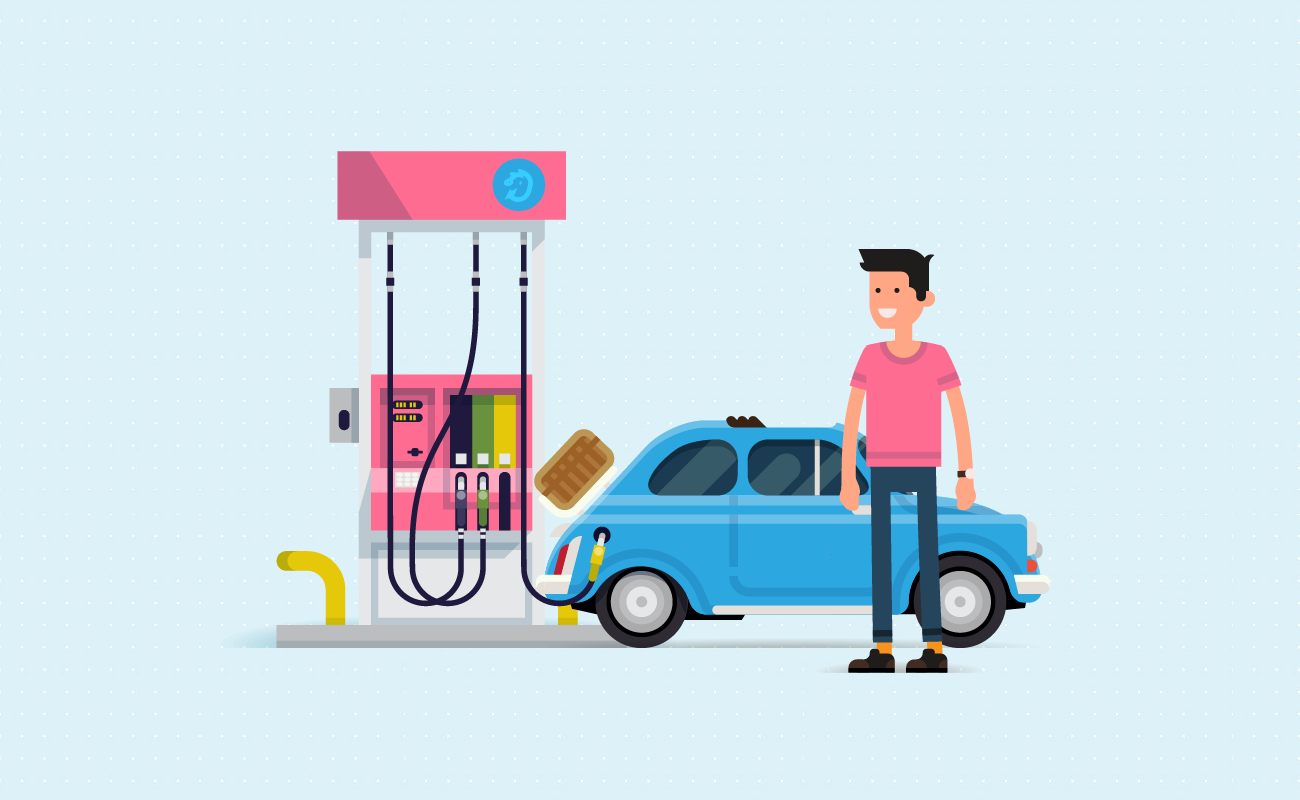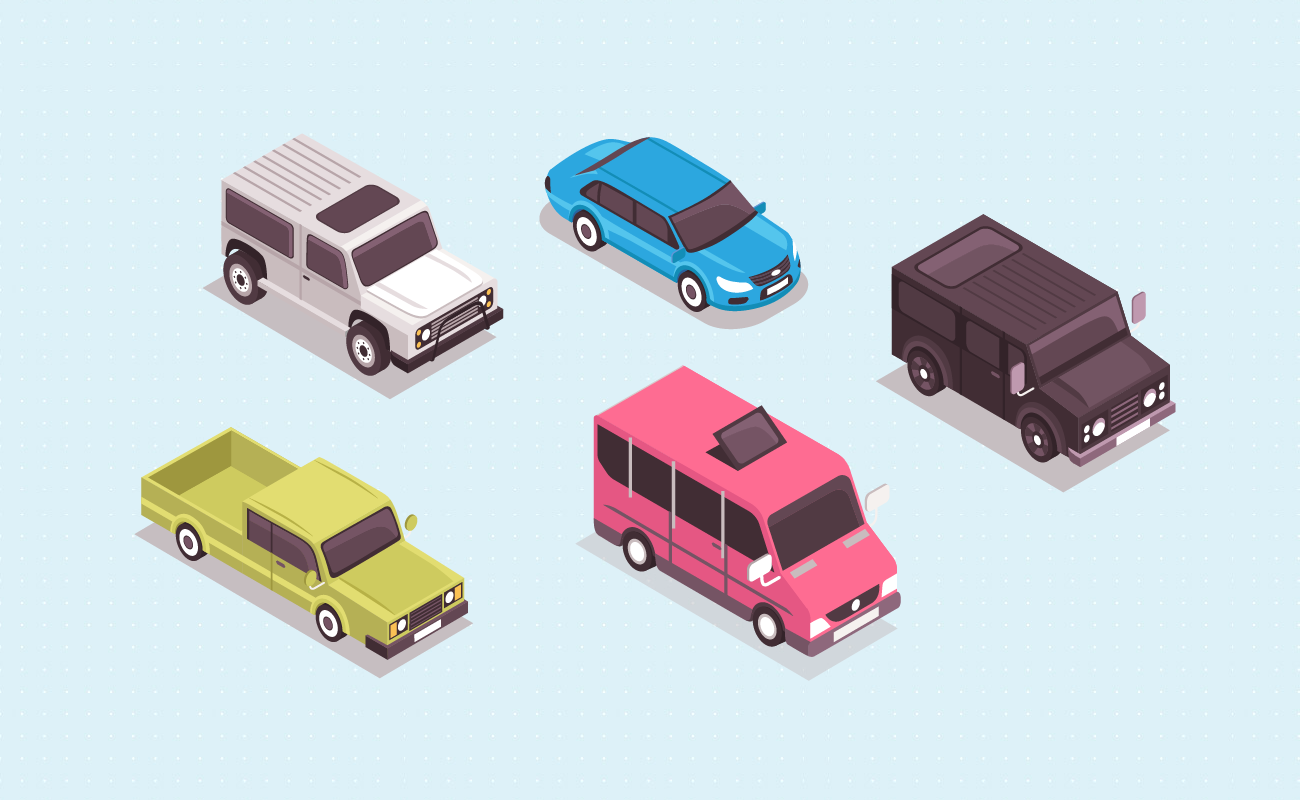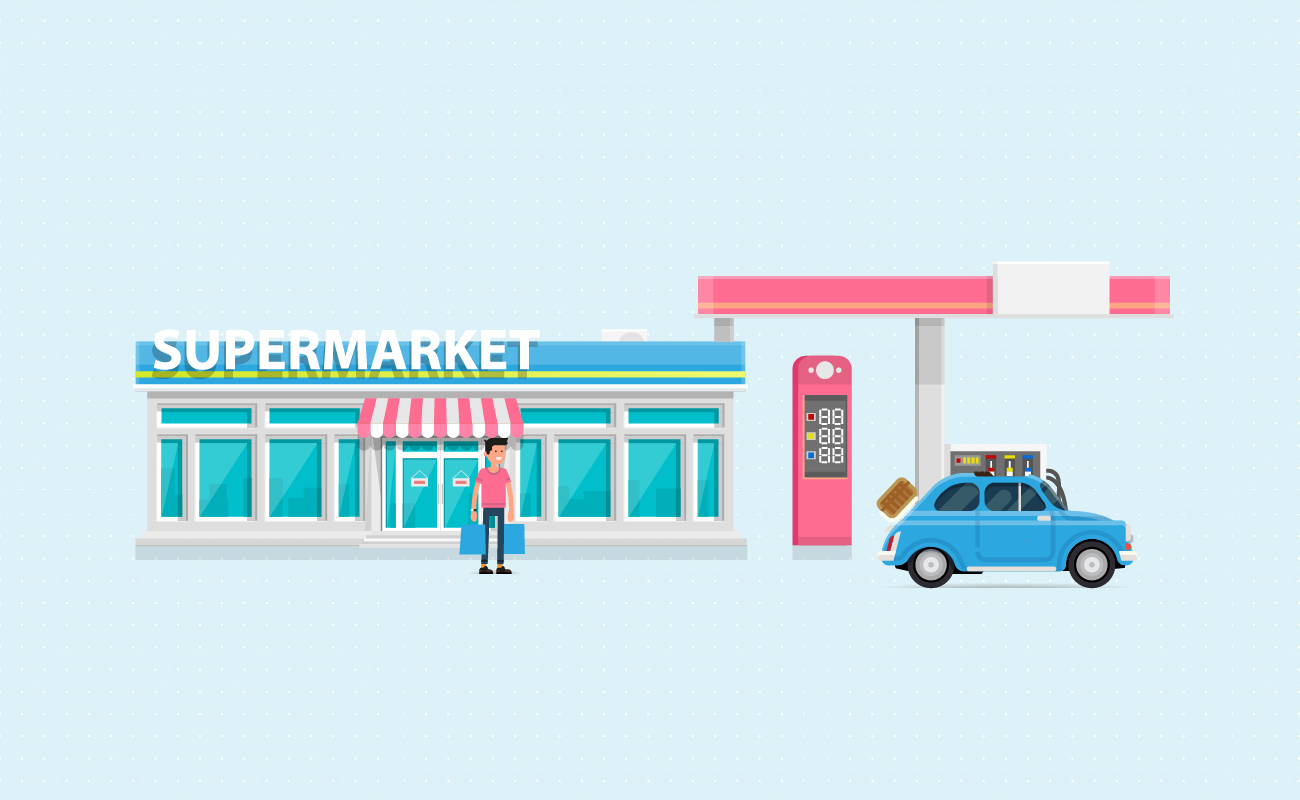Auto Loans
Affordability
Loan Payment Options
Biweekly Payments
Compare Rate & Term
Rebate vs Low Interest
Home Equity Loans
Lease or Buy
 Auto Fuel Budget Calculator
Auto Fuel Budget CalculatorThis calculator will help you to estimate your annual gasoline cost given the type of car you drive, how far you drive, and your MPG rating. Enter the calculated MPG or select a car type from the dropdown fields below it, then enter your driving info along with the local price of gas.
Authored by Jose Abuyuan on June 22, 2020
The first thing to rise in times of economic uncertainty is the price on fuel. People across the globe dread the prospect of paying princely sums on the pump. And it isn’t only because of its effect on your ability to travel. When fuel prices rise, so does the price of everything. Weaning ourselves from dependence on black gold proves difficult and elusive. Fortunately, there are many ways to reduce the impact of fuel prices on our budget.

Fuel is part of a long economic chain that runs the world economy. In most (but not all) cases, the sudden arrival of oil could bring near-instantaneous wealth. Stories abound of people becoming millionaires overnight upon discovering an oil reserve. Nations that strike oil in their borders imagine an influx of development and wealth. This doesn’t hold true all the time.
Supply and demand dictates the price of oil. People need oil for fuel and many other things (plastics, petrochemicals, and fertilizer). Oil is also scarce and hard to find. Scientists estimate that the world will deplete its oil reserves in the future. Reaching “peak oil” means that production can no longer be sustained in viable levels. It’s a matter of when, not if.
The rush to move to a different source of fuel was often dictated by the crippling dependence on oil. The U.S. does not rely on oil for much of its electricity. It does, however, rely on it to keep moving.

Anything that disrupts the petroleum supply chain can lead to a sudden spike in fuel prices. Then and now, the impact of fuel prices influence the type of cars people buy. In times where oil was plentiful, supercars and gas-guzzling light trucks became popular. When oil prices skyrocket, fuel efficiency became the word of the day.
Geopolitical upheavals often came close to many a vehicle’s golden age. The supercars of the 50s and 60s met their end in the 1973 Oil Embargo by the Organization of Petroleum Exporting Countries. This led to the popularity of boxy subcompacts geared for tight city driving. Ever wonder why the Volkswagen Beetle was so popular (besides the Herbie movies) or why anyone thought the Yugo GV was worth exporting? This is why.
The Late 2000s financial crisis had a similar impact in recent memory. People couldn’t afford fuel when they could barely forestall home foreclosure. This was one of the nails that led to the decline of the gas-guzzling sports utility vehicle. The Hummer went from a symbol of power to a symbol of decadence within a few short years.
Even fleeting moments can lead to sudden spikes in gas prices. In September 2019, drone attacks shut down Saudi Arabia’s oil facilities. This led to a five percent drop in global production. Crude prices rose 20 percent, sending shockwaves across prices. For a time, oil prices remained volatile as production was stalled. For the average motorists, even these events can hurt the wallet, especially if they came at a vulnerable time.

In 2017, the average American motorist spent about $1,977 on fuel each year. How much fuel you consume on a daily basis depends on a few key factors:
Where you live can have a profound effect on how much you must spend on fuel. In general, city dwellers need cars less. In some cases, it may even be impractical to own a car, especially if it’s hard to park it. Today, heavy rent prices in the inner city force people to live further away from their place of work. Living in suburbs mean that people can expect rush hour stop-and-go traffic.
The state of the road system can affect both the frequency of traffic and the literal smoothness of road travel. Constant roadworks might cause frequent congestion. Meanwhile, rough or unpaved roads may force you to drive in an inefficient manner. The constant braking and accelerating wouldn’t be good for your car’s maintenance, either.
A key factor affecting fuel consumption is the fuel efficiency rating of your car. Cars with excellent fuel efficiency ratings consume less fuel in ideal conditions. Note the last three words. Not every vehicle is efficient in the same conditions. Gasoline and hybrid cars are an excellent choice for city driving where stop-and-go traffic is commonplace. Meanwhile, diesel cars are more fuel efficient over long-distance, low traffic commutes. The right fuel efficient car can help you weather through fuel price fluctuations.
Visit our page on mileage per gallon to learn more about optimizing fuel efficiency.
We have suburban sprawl to blame for much of our issues with gas prices. The automobile made it possible for workers to live away from their place of employment. During the 1950s, cars were the pinnacle of modernity. Urban planners imagined spread-out cities of grand car-friendly freeways and avenues. It became emblematic of the American dream to live in a picture-perfect suburb. Today, most people aren’t too keen on what life in the suburbs imply. To get anywhere, you’d need to drive. Land or rents may be cheap, but the trade-off can be immense. Suburbanites often get stuck in stop-and-go traffic come rush hour. Their car dependence also makes them vulnerable to spikes in gas pricesA Car-Dependent Conundrum
![]()

Two of the best ways to reduce your expected fuel consumption is to choose the right car and live in the right place. When you’re starting out, this can make a world of difference for your projected budget. More rigorous house-hunting or vehicle shopping can help you find good deals.
For others, these aren’t the most practical options. A growing family may need space that even a reasonable condo in the city can’t provide. People who need to haul items often may need to sacrifice fuel savings for carrying capacity. Fortunately, even these trade offs can be managed.
Drive less frequently. Thank you, Captain Obvious. It can be beneficial for your budget and your car’s longevity to use it less. If your commute or errand doesn’t need heavy lifting or isn’t far away, consider walking, jogging, or riding a bike. You save on gas and get your workout done for the day. People in cities with heavy congestion can use bikes to their advantage. You can, in fact, travel faster on a bike during the worst of rush-hour traffic. That can translate to a lot of savings in time and fuel costs.

Telecommuting is one of the best ways to reduce your reliance on your car. If you can work well from your home office, you’ll be saving a lot of money on transportation costs. Your employers also free up more space for new coworkers. Plus, you cut down on the stress of traffic.
Carpool. Sometimes, you don’t need to carry the burden of fuel prices alone. Join a carpool or offer to start one with your coworker friends. If you join an existing carpool, you can put your own car away until you need to use it. Meanwhile, if you offer to host the carpool, you’ll cut down on your own fuel as your friends and coworkers pitch in.
Pay in cash. The flea market isn’t the only place that will give you a steal if you pay in cash. Banks charge businesses an extra fee to process all electronic transactions. Thus, everyone (including gas stations) incentivize spot-cash payments. Before you choose to pay in cash, however, make sure that your savings are worth it. Sometimes it is better to pay with your credit card if the cash discounts aren’t big enough.
Use an app. Looking for a place that offers cheap gas can be a time and fuel-consuming effort. Save yourself some trouble by downloading apps like Gas Buddy and Waze. These are very useful when planning road trips. Before setting off to a different gas station, determine if the drive to a cheap place is worth it. Once you find a place that offers consistent low gas prices, consider becoming a regular. Their costs would remain the same regardless of short-term fluctuations.
Sometimes, the best way to look for cheap fuel is to find it elsewhere. Eschew the big name brands in favor of generic gas stations. Often, the only difference between their fuel and the name brands’ is that theirs lack engine-cleaning additives. You don’t otherwise need these additives. If you want to clean out your fuel, you can often buy them in bulk and add it to your engine yourself. It’ll cost you much less than if you buy name-brand fuel over the long term.
Reconsider paying for premium gas. Although buying for quality is usually encouraged, it isn’t the case for fuel. Each car’s engine is designed to work best for a specific octane rating. Check your owner’s manual for the recommended octane rating for your vehicle. Buy premium only if your manufactuer recommends it. Otherwise, you’re just wasting money.

Wholesale stores like Costco offer many benefits for the prudent bulk buyer, including fuel savings. Some of its locations offer inexpensive generic fuel refilling.
Waiting to fill up when your fuel tank is close to empty is ill-advised. Fuel acts as a secondary coolant for your car. Without it, air accumulates in the interior of the tank. When this air heats up, it can cause premature wear on your fuel pump. Empty space in the fuel tank can also accumulate dirt. The last thing you want is to pay for expensive repairs because you put off refueling until the last minute.
Keeping your gas tank full also prevents you from getting stranded. The last thing you want is to run out of gas in the middle of nowhere. When you’re running on empty, you end up buying fuel from whatever station is closest (which might be very pricey).
The best time to refuel is when your gas tank is at least a quarter full. It is also a good idea to fill up on fuel before going on a long journey.
If you must wait before filling up, schedule it to coincide with the best prices. Prices, for instance, are often at their lowest during the middle of the week. Stagger your refueling schedule to take advantage of hump day discounts.

Many retailers and gas stations provide loyalty programs for regular customers. If a nearby station offers good prices, consider signing up to their fuel rewards program. Retailers also offer rewards points that can be redeemed at partner gas stations. Grocery reward points credit a point for a specific amount spent at the store. And because these are often regular purchases, you can often accumulate a lot of points in a short period. Do note that points expire. Learn how long they last and use them as often as you can.
An article from Forbes outlines some of the best reward point programs available.
We’ve told you time and again not to use credit cards unless necessary. Yet if you can to use them with care, they can be an excellent ally toward greater savings. Often, credit card companies sweeten the pot for their cardholders by offering rebates and discounts. Responsible cardholders can leverage these discounts to their advantage.

Credit card interest is a terrible deal. Only use credit cards for everyday necessities such as fuel if you can pay off your whole balance on time. For our tips on responsible credit card use, visit our pages on minimum credit payments and credit principal reduction.
A fuel rewards program and cash-back bonus credit card can help you rack up the fuel savings. Ideally, you should pick a card that offers no annual fees and low annual interest rates. If your credit card has a rewards point program, you can accumulate those fast by buying gas on credit. And if you limit your spending to what you can pay off by the due date, you can dodge those punitive interest charges.

Even simple habits can cut down on your average fuel consumption. Sometimes, the best recourse is to avoid wasteful everyday driving habits. Good driving also plays a key role in cutting down on fuel costs. Visit our page on reducing auto operating costs for more details.
1
Plan around traffic. We can’t do anything about the traffic we encounter when it’s already there. But we can plan around the worst of it. Know the route of your everyday commute and the times when congestion is at its worst. You can save a lot of time in traffic by leaving earlier than rush hour. Travel in adverse weather only when necessary.
2
Idle less. Idling consumes a lot of fuel. Unless you’re stuck in traffic, it’s often best to turn off your car when you’re waiting for longer than a few seconds. You also don’t need to idle to “warm up” your vehicle, even on cold days. Today, all you need is to hop on and drive to let your vehicle warm up.
3
Parking Matters. Give up the search for a perfect parking spot. You’ll spend a lot of fuel driving in first gear, idling, and hitting the breaks. Unless your bringing your grandparents with you, there’s no point in waiting too long for a good spot.
4
Adjust Your Air Conditioning. Only use your air conditioning when necessary (e.g., hot days, driving through the desert). If you’re traveling at a steady speed, the outside air might be just as refreshing.
5
Test new routes. What makes a route faster often isn’t its physical length but its relative absence of traffic. If your shortcut doesn’t have as much congestion, it’s a keeper. Apps like Waze or Siri can help you find good alternate routes. However, shortcuts can make long delays if you aren’t familiar with them. Set aside a day to test out an alternate route and see if it shaves off time faster.
If you want to find out how much you can save by switching gas stations, visit this page.
Wondering how much you can save if you switch gas stations? Use our fuel cost savings calculator.
Jose Abuyuan is a web content writer, fictionist, and digital artist hailing from Las Piñas City. He is a graduate of Communication and Media Studies at San Beda College Alabang, who took his internship in the weekly news magazine the Philippines Graphic. He has authored works professionally for over a decade.